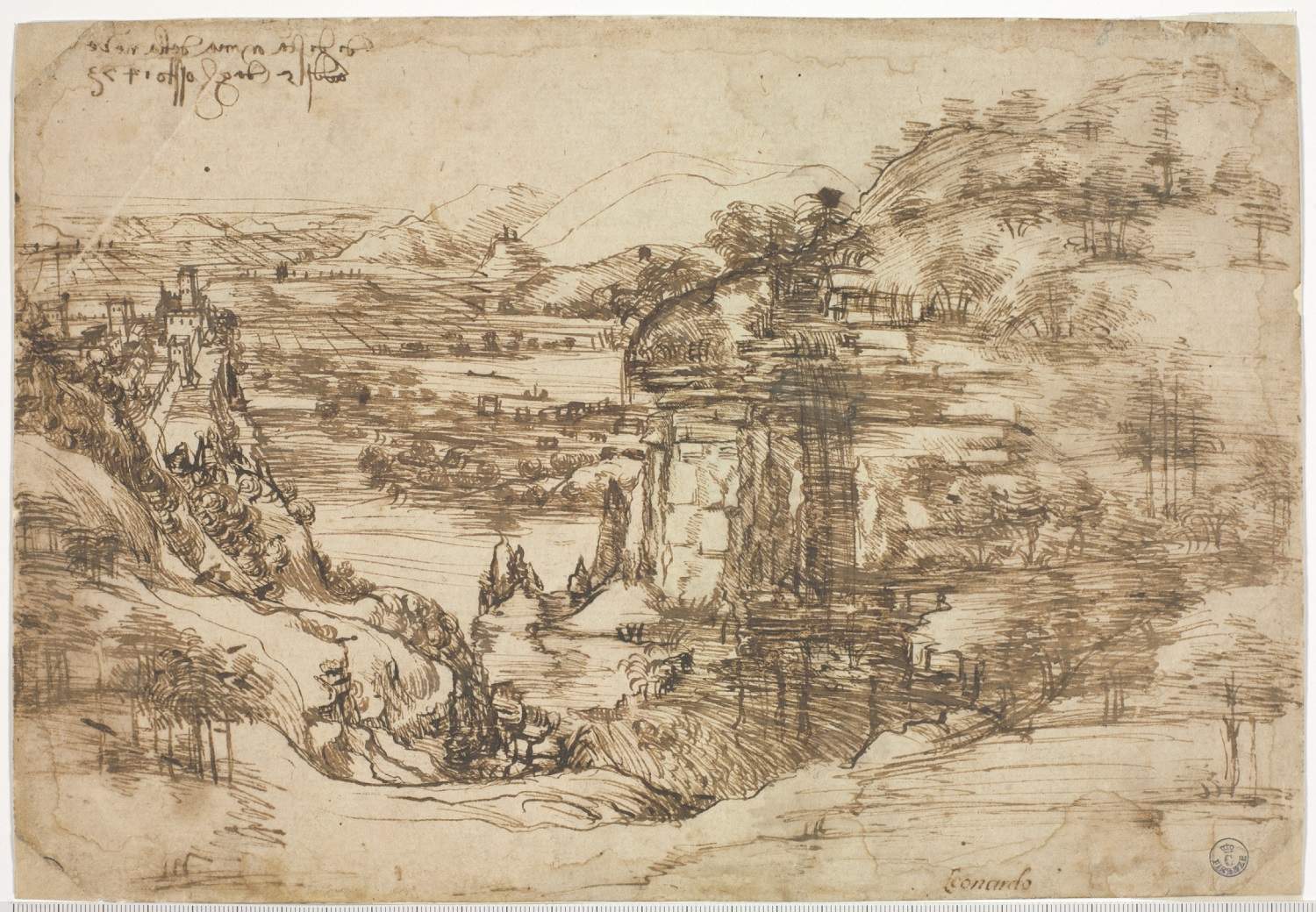Leonardo da Vinci's celebrated Landscape is subjected to scientific analysis for the first time
The very famous Landscape by Leonardo da Vinci (Vinci, 1452 - Amboise, 1519), dated August 5, 1473 and the first work definitely dated by Leonardo, was brought today from the Uffizi to the Opificio delle Pietre Dure. This is an exceptional event: for the first time, in fact, the drawing is being scientifically examined with the most advanced methodologies and all the latest instruments, which will give us a better understanding of the genesis and nature of this celebrated image.
Due to its fragility, the drawing cannot be exposed to the light for a long time: however, the work will be the protagonist of an exhibition in Vinci from next April 15 for five weeks, then it will have to return to the Drawings and Prints Cabinet of the Uffizi. Today, the special handover of the 8P (this is how the sheet is known in scientific circles, an acronym that corresponds to its inventory number) took place under the gaze of the Carabinieri of the Nucleo Tutela Patrimonio Culturale. Maurizio Michelozzi, an expert restorer in the conservation of drawings and an official of the Uffizi, accompanied the work to the laboratories at the Fortezza da Basso and will follow the scientific research on it in collaboration with the team from the Opificio delle Pietre Dure: Letizia Montalbano, who specializes in drawings, Roberto Bellucci, who has already worked on the Adoration of the Magi, and will take care of the optical diagnostic aspects, under the supervision of Cecilia Frosinini and Superintendent Marco Ciatti.
The first line of investigation revealed two different drafts highlighting an area and some details that were added later to the first version of the work. At the moment, optical analysis has been carried out on the recto of the drawing (i.e., the front side); later the same investigations will be adopted for the verso (i.e., the back side) of the sheet, where a human figure is sketched. The goal is to try to understand the stratifications and the succession of phases in order to understand the evolution of the work.
“At the moment,” Cecilia Frosinini points out, “the use of two different materials in the drawing strokes has been highlighted. A black ferrogallic ink and a liquid carbonaceous material, perhaps applied with a very thin brush, particularly to build the central rock formation. We were able to highlight some of the details and read them through very high resolution images, in scattered light and infrared, identifying the two different phases. It is likely that Leonardo returned to the drawing at a later time, perhaps just after his studies on geology and rocks.”
After the microscopic observations, it will be the turn of examinations using the X-ray fluorescence (Xrf) technique, a spectroscopic technique that will allow the analysis of the chemical components of the materials used. The cognitive examinations, which will continue in the coming days, will also be followed by conservation assessments on the back of the drawing. “It’s always a fascinating experience to relate to a Leonardo,” Cecilia Frosinini concludes, “but having had the Adoration of the Magi for five and a half years it’s almost like having one of our favorite patients back in the ward.”
The director of the Uffizi Galleries, Eike Schmidt, comments on the initial findings, noting that “of the different inks already known, but the big news here is the identification of two distinctly different phases in which Leonardo worked on the 8P drawing. This offers new certainty to art-historical studies and helps us understand this mysterious work. Indeed, very often the landscape is interpreted as a precise geographical image, as if it were a kind of ’photograph’ of this or that valley, of these or those mountains. Today, however, a process of making the drawing in two successive moments has been discovered: this shifts the balance toward interpretations that emphasize its imaginative aspect and the character of intellectual speculation on the part of the artist.”
Image: Leonardo da Vinci, Landscape with River (1473; pen on yellowed white paper, 196 x 287 mm; Florence, Uffizi, Gabinetto dei Disegni e delle Stampe)
 |
| Leonardo da Vinci's celebrated Landscape is subjected to scientific analysis for the first time |
Warning: the translation into English of the original Italian article was created using automatic tools. We undertake to review all articles, but we do not guarantee the total absence of inaccuracies in the translation due to the program. You can find the original by clicking on the ITA button. If you find any mistake,please contact us.




























